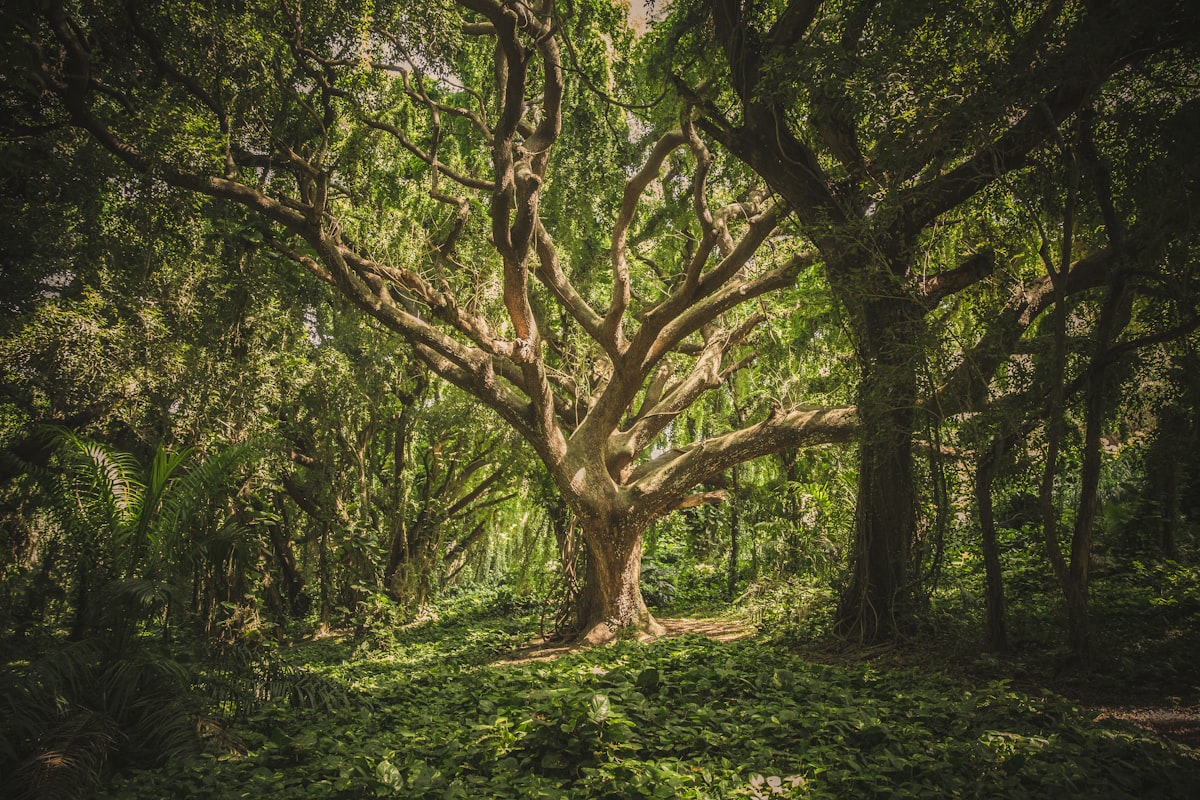Wood Wide Web: The Underground Internet of Trees
Do you remember those old box radios, which would every once in a while latch on to some obscure frequency and belt out random gibberish? Perchance, your stroll in the garden opened you to the frequency the trees were chatting on

Were I to tell you that James Cameron’s epic Avatar was based on real-life research, would you believe me? Would the statement that the Tsaheylu bond the Navi people swore by in Avatar has compelling Earth references seem far-fetched?
Now, before proceeding any further, imagine taking a stroll through the woods on a calm evening. A gentle breeze is caressing your hair, while the setting sun is painting the horizon red. As you snake your way through the trees, you hear a rustle, it’s the sound of the leaves dancing to the tunes of the wind, producing an eerie note. You feel like the trees are communicating with you, wanting to let on to you their secrets. But you shirk off the thought knowing well that trees can’t speak, or can’t they?
Do you remember those old box radios, which would every once in a while latch on to some obscure frequency and belt out random gibberish? Perchance, your stroll in the garden opened you to the frequency the trees were chatting on, but untrained as you were in the language of nature, you just were spooked. Finding this strain of thought hard to believe?
Then it’s high time you read the book Finding the Mother Tree by Prof Suzanne Simard. Finding the Mother Tree is a book that would shake you to your very foundations and you would never be able to view trees as lifeless, motionless objects, for behind the veneer of stillness hides a busy network, unmatched in speed and scope by anything we know. A network scientists prefer calling WWW or Wood Wide Web. This is not a review of Simard’s work, but the story of the ground-breaking research behind it, a story that fetched noted writer Richard Powers his Pulitzer for the novel The Overstory, which was partly inspired by Simard’s painstaking study spanning three decades.
A forest ecologist, Professor Simard’s Finding the Mother Tree is already a New York Times bestseller, and that, too, barely two months after launch in May 2021. Simard has distilled the wisdom accrued out of her decades of research in the 360-odd page treatise. Simard began researching trees as part of her doctoral thesis in the 1990s and came up with a research that found mention in the reputable journal Nature in 1997. It is a significant achievement in that not all such theses find place in that prestigious journal. In her research, Simard found evidence of the existence of what she calls a Mother Tree.
Invariably the oldest tree in the forest, a Mother Tree does what only a mother can, which is nurturing the young ones and looking after the well-being of all in the family in the cooperative environment that a forest is. Her findings put her at variance with that colonial, utilitarian doyen Charles Edward Darwin, whose famous ‘survival of the fittest’ dictum falls flat as Simard goes about dismantling the millenia-old Western prejudices surrounding nature. Simard explains in great detail how nature’s superfast Internet empowers the Mother Trees to pull off a seemingly impossible task.
Here, a Mother relies on a symbiotic relationship with fungi, which enter into a give-and-take deal with trees, offering the trees nutrients in exchange of food and often acting as couriers, carrying the mother’s advice to others through their elaborate network known as Micorrhiza. Yes, just like humans, some loner trees do exist in forests, but a vast majority is interconnected through this micorrhizal network. Through this network, scientists claim, trees share nutrients with others and also share warning signals if a threat appears.
Just how’s this relationship any different than a normal human family’s is a moot point, for there are documented cases of older trees changing their root structure to let the younger ones flourish. Typical mother behaviour if ever there was one! Moreover, individual trees are known to infect the seedlings with fungi such that when they germinate, they, too, get access to the vast resources, both material and experiential, being exchanged round-the-clock. Talk about carrying forward the legacy!
Once you observe this interconnection through the scientific lenses, there remains little doubt that data sharing is not endemic to humans. The micorrhizal network is formed when the fine hairs of roots connect with the filaments of a fungi, acting as a modem here, to share real-time data, nutrients and experiences. For acting as an intermediary, the fungi charge a fee, which is pegged at around 30% of sugar that the trees produce after photosynthesis.
Besides these exchanges, trees also have other trappings of human behaviour. For instance taking care of the lesser privileged through what the scientists call inosculation, a process through which nearby trees help ones with severed trunk or stunted systems grow. Among thousands of different ways trees help each other flourish, there is one known as the Shameful Foliage phenomenon, under which high rising trees in compact spaces do not let their foliage touch others’, coming across to human observers as though each tree is respecting other’s private space. This contactless growth spurt is deridingly called Shameful Foliage.
Besides, there are human-devised ways to tap into the cooperative nature of trees. Take grafting as an example, wherein two different species are joined together through human intervention to boost the productivity or the resilience of trees. While humans can bask in the glory of hacking nature, for trees it’s a way of life. Grafting is only an artificial method of harnessing what comes naturally to trees.
Now, coming back to the point where you felt like the trees were itching to let on to you their secrets. While humans are known to have a hearing range spanning 20 Hz to 20,000 Hz, various studies have shown that trees vibrate in the range of 50 to 120 Hz. So, despite the vibrations being in our hearing range, why can’t we hear the plants or the trees buzzing? The answer is simple: We don’t much care about these sounds, so we tend to ignore them. But not insects or other animals. Researchers have found trees attract pollination agents and ward off predators by emitting ultrasonic sounds. These signals are used also to transmit messages indicating imminent threats or some new potential worth exploring. These airborne signals have been a significant part of the evolutionary cycle of trees, leading to their diversity. And the best part is, these information exchanges happen real time.
So, the next time you wonder why a bird is attracted to a particular flower or fruit, while giving a wide berth to others, remember the attraction or aversion is a product of trees’ data crunching ability, helping it to discern good from bad. Some researchers say that these signals help plants and trees form defence mechanisms accordingly to keep the pests at bay or come up with flowers and fruits to attract agents capable of distributing their seeds far and wide.
While the West has made great leaps in our understanding of trees, one cannot emphasize the role played by the great JC Bose enough. His findings were seminal to plants being written off from the list of inanimate objects to being considered a lifeform, with a capacity to experience and emote. His influence on scientific society was such that the great English playwright George Bernard Shaw, who considered himself a man of modern temperament and a vociferous advocate of vegetarianism, once shed tears for a cabbage that was being boiled to death as part of an experiment. While we do not vouch for the veracity of the episode, some believe he cried for the dead cabbage after coming into contact with Bose, who impressed upon Shaw that all plants felt like humans.
Now, the next time you pass through the woods and feel like the trees are communicating with each other, don’t harbour any doubts, for they are. Just like the Ents in the Lord of the Rings, the tree in your backyard could very well be mulling over how times have changed, regaling other trees many metres away with tales of yore, maybe even talking about dinosaurs and other gargantuan animals that roamed the earth, or even of the puny animals that walk on two legs and chop the very trees they cannot live without. And all this, through the able support of the innocuous looking mushrooms, or fungi, and the deep mycorrhizal network you never thought existed.




